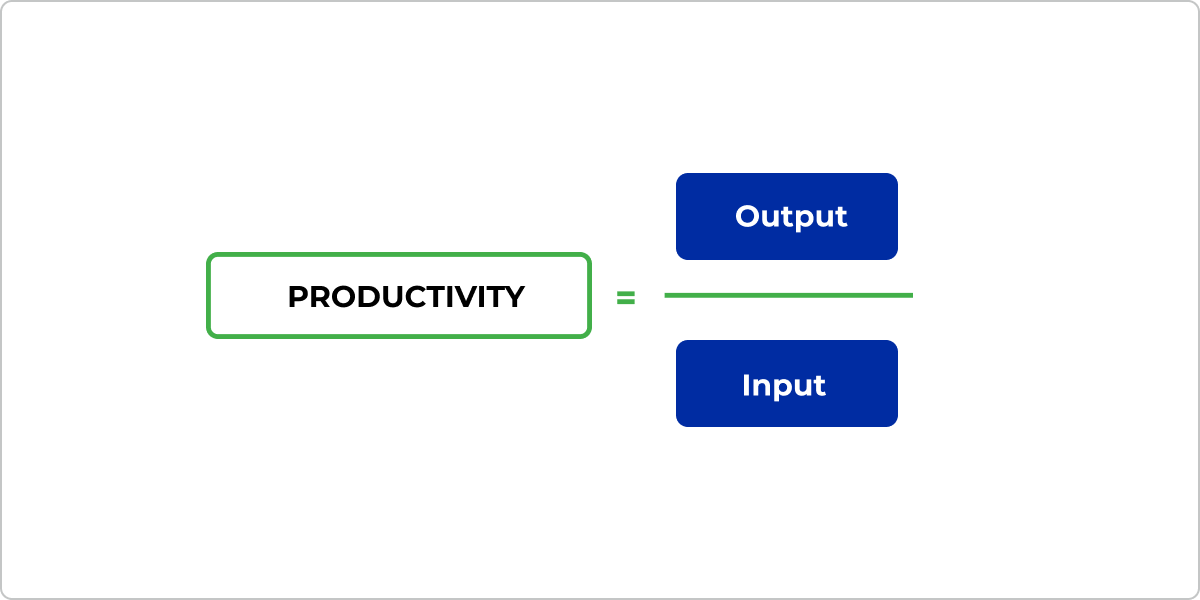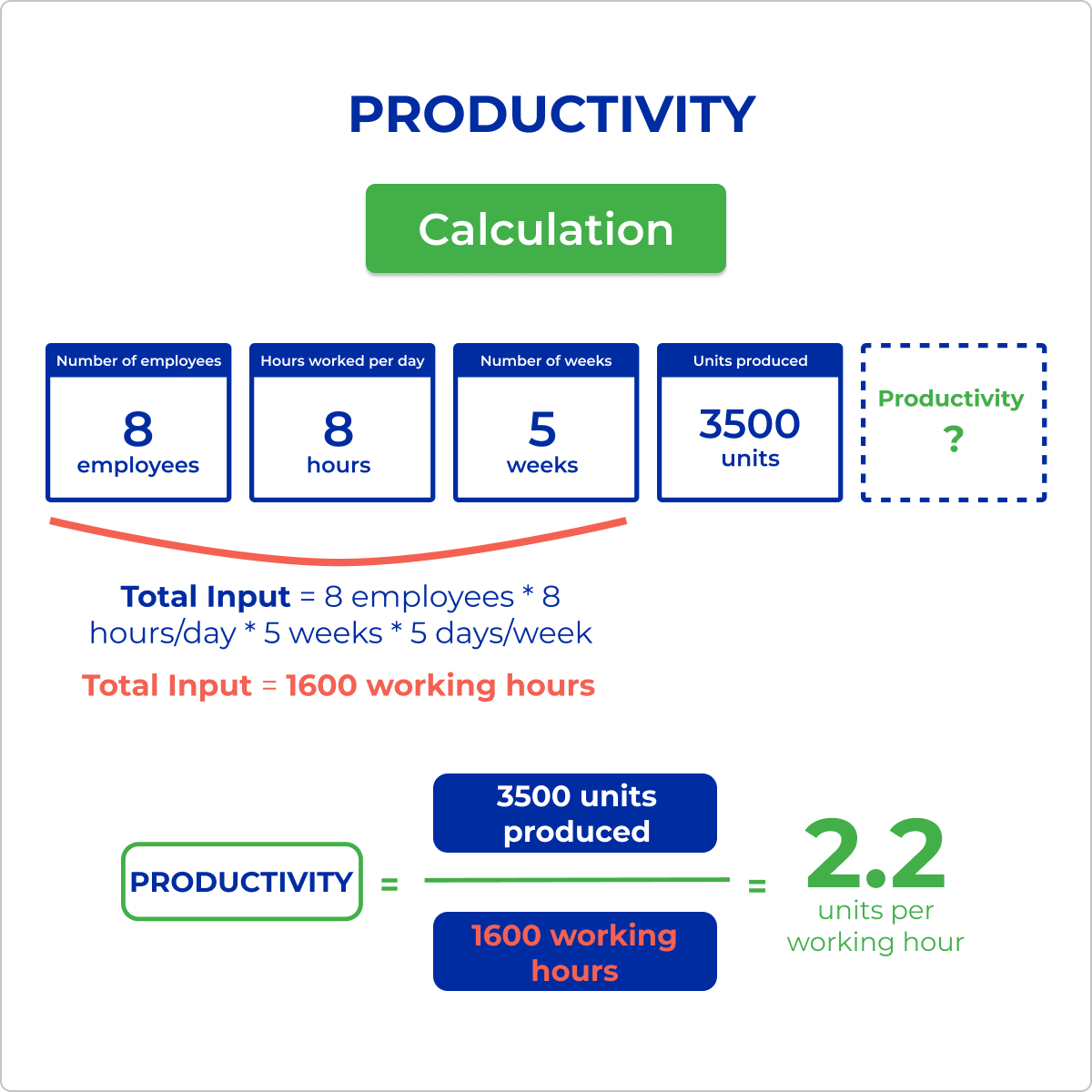In today's fast-paced and competitive business world, companies constantly strive to improve performance and achieve greater success. Two terms often used interchangeably in this pursuit are productivity and efficiency. While both concepts are crucial for the success of any organization, they are distinct and have unique benefits.
Many companies tend to focus on one over the other, but the truth is that both productivity and efficiency are equally important for the growth and sustainability of a business. Great companies understand the importance of striking a balance between the two, as they go hand in hand in driving success.
In this article, we will delve deeper into the differences between productivity vs. efficiency and why great companies must strive for a combination of both.
Before we go into detail, remember that in various contexts, productivity and efficiency can be applied to individuals, teams, organizations, or even entire economies. Keep in mind that the examples in the article can be attributed to the team level.
What Is Efficiency?
The most common belief is that efficiency refers to the ability to accomplish a task or goal with the optimal use of resources. It indicates the extent to which a system or process minimizes waste, time, and effort while maximizing the desired goals.
One commonly employed method for evaluating labor efficiency involves a comparison between the actual number of hours required to produce a specific product or service with the standard in that industry or setting.
Given this definition, we can say that efficiency is about doing the same with less. But how to improve workflow efficiency? One way is minimizing the number of labor hours necessary to achieve equivalent output levels. This outcome leads to advantageous cost savings for the company, as expenditures on wages and other labor-associated expenses are significantly reduced.
Then, efficiency is about reducing or optimizing the inputs (for example, labor hours, headcount, etc.) in an effort to improve profitability.
Therefore, efficiency seeks to produce the highest quality output with the least input. It is a measurement of profit and waste produced. The definition of actual efficiency is producing high-quality results with few inputs.
One way of measuring efficiency is by using the following formula:
Efficiency = (Output / Input) x 100%

Efficiency formula
Example of Efficiency Calculation
I would like to insert one explanation here. When discussing Output and Input in the context of efficiency, we generally must read the standard formula Efficiency = (Output / Input) x 100% slightly different. Here is how:
Efficiency = [Target time per completed units (Output) / Actual time per completed units (Input )] х 100%.
In this case, we refer to Input as the standard time (benchmark) needed for a given job.
Let's explore this in detail.
For example, imagine that a marketing team produces 5 articles for 20 days on average. In this case, 20 days are the standard time for the job. However, in the last period, the marketing team completed the 5 articles in 30 days. And because efficiency is about the optimal use of resources, in this case, time or the worked days is the resource.
So, the efficiency of the team will be calculated as follows: Efficiency = (20 days / 30 days) х 100%, or Efficiency = 66%.

Example of efficiency calculation
What Is Productivity?
Briefly, productivity measures the efficiency of your production process. It is often expressed as the ratio of output to input.
Higher workforce productivity usually means that employees create more in less time.
In other words, productivity is about doing more with the same. The most frequent definition of labor productivity is: “the ratio of the output of goods and services to the labor hours devoted to the production of that output.” Which sounds very similar to the definition of efficiency.
An indicator of labor productivity growth is the change in output per labor hour over a period of time. For any organization, productivity is directly tied to performance. Increasing labor productivity allows companies to produce more goods and services with the same amount of work. In contrast to efficiency, productivity is about increasing output from the same workforce to increase top-line growth.
You can measure productivity by using the following formula:
Productivity = Output / Input

Productivity formula
Example of Productivity Calculation
Let’s calculate the productivity of 8 employees who have worked 8 hours each day, 5 days per week for the duration of 5 weeks, and have produced 3500 units.
We will use the following formula for calculating productivity: Productivity = Output* / Input*
Productivity = 3500 / (8*8*5”5) = 2.2 units per working hour
In other words, productivity shows how efficiently a team works to increase output relative to input.

Example of productivity calculation
Why Is Productivity Important?
- Resource Utilization: The measurement of productivity assesses the efficiency of resource utilization, encompassing time, labor, capital, and materials, in producing desired output. Enhanced productivity signifies an optimal utilization and effective management of these resources.
- Cost Effectiveness: The correlation between productivity and cost-efficiency is frequently observed, indicating the proficiency with which an organization or individual attains their objectives in proportion to the resources allocated. Enhanced productivity has the potential to yield financial benefits through reduced expenses.
- Competitiveness: High productivity can increase competitiveness in a business context. Companies that can produce more goods or services at a lower cost are often more competitive.
- Innovation and Improvement: The analysis of productivity trends can effectively pinpoint areas in need of innovation and enhancement, thereby enabling organizations to proactively address inefficiencies and strive for process optimization to maintain competitiveness within a rapidly evolving business landscape.
- Sustainability: The goal of productivity is not only to maximize output but also to do so sustainably. It is also important to consider the environmental impact, social responsibility, and long-term viability.
- Goal Achievement: Productivity measures how effectively teams, individuals, and organizations achieve their goals. Strategies, processes, and operations are evaluated based on their effectiveness.
Why Is Efficiency Important?
- Resource Optimization: A process that is efficient, minimizes waste, and maximizes output by utilizing resources, such as time, money, labor, and materials. The goal is to optimize resource utilization without causing unnecessary depletion or excess.
- Time Efficiency: An important aspect of overall efficiency is time efficiency. When a process or system operates efficiently, delays and bottlenecks are avoided.
- Cost Efficiency: A hallmark of efficiency is achieving goals at a minimal cost. Rather than cutting costs at the expense of quality, this means finding ways to achieve the same or better results without spending unnecessary money.
- Process Optimization: It is often necessary to streamline processes and eliminate unnecessary steps in order to achieve efficiency. In order to optimize workflows and enhance efficiency, continuous improvement methodologies are commonly used.
Real-Life Examples
We can further demonstrate the importance of optimizing productivity and efficiency for any organization by sharing some insights from two case studies our team has conducted.
In the first case study, Sensata Technologies Bulgaria used the implementation of a kanban system with Businessmap’s software platform to increase the team's throughput from 17 (average number of completed requests March-May 2020) to 43 (average number of completed requests March-May 2021). Respectively, they increased their productivity, and this resulted in more predictable operations.
In the second case study, after implementing the Businessmap software, SCHLENK (one of the leading manufacturers of metal powders, pigments, and foils) significantly reduced the cycle time of one of their teams from 110 days to 44 days. Furthermore, the process improvement initiative helped the company create a smoother flow of information, reduce the waiting times between teams, and increase their throughput, resulting in improved project performance.
What Are the Differences between Efficiency and Productivity?
Efficiency refers to how well resources are utilized to achieve a desired outcome, while productivity refers to the rate at which output is generated relative to input. Efficiency focuses on minimizing waste, reducing costs, and optimizing processes, while productivity emphasizes output quantity. In other words, efficiency is about doing things right, while productivity is about doing the right things.
An organization can optimize its process efficiency by eliminating unnecessary steps or reducing time, but it may not necessarily be productive if it is not producing the desired output. Conversely, high productivity does not guarantee efficiency if resources are not used optimally.
Both concepts are important for organizations to optimize their performance and achieve their objectives.
What Are the Factors that Decrease Productivity and Efficiency?
Factors that can decrease productivity or efficiency include:
- Poor time management
- Lack of clear goals or objectives
- Inadequate communication and feedback
- Workplace distractions
- Insufficient resources or training
- Low employee motivation
- High levels of stress or burnout
- Disorganized work processes
- Ineffective leadership or management
Identifying and addressing these factors can help improve productivity and efficiency in the workplace.
Tips for Improving Efficiency and Productivity in the Workplace
To improve efficiency and productivity in the workplace, consider implementing the following tips:
- Set clear goals and prioritize tasks to stay focused.
- Streamline processes and eliminate unnecessary steps.
- Delegate tasks to appropriate team members to divide the workload.
- Calculate workload to ensure fair distribution and identify potential bottlenecks.
- Use technology and automation tools to automate repetitive tasks.
- Encourage open communication and collaboration among team members.
- Provide regular training and development opportunities to enhance skills.
- Implement Lean management principles for defining, managing, and improving services and products.
- Minimize distractions and create a conducive work environment.
- Take regular breaks to recharge and avoid burnout.
- Continuously evaluate and adjust strategies to optimize efficiency and productivity.
In conclusion, while productivity and efficiency may seem like similar concepts, great companies must strive for both. Productivity focuses on output and getting things done, while efficiency emphasizes delivering output with less overhead.
By combining these two factors, companies can achieve a balance that leads to success and growth. It is important for companies to continuously evaluate and improve upon their processes to maintain both productivity and efficiency. Striving for both will benefit not only the company but also its employees, customers, and overall success in the long run.

Mila Chervenkova
Marketing Expert | Agile, Kanban & OKR Practitioner
Mila is a seasoned marketing professional with a rich background in product marketing, content creation, and website optimization. Years of Practicing Kanban, Agile, and OKR practices have made her an expert in creating powerful productivity habits.



